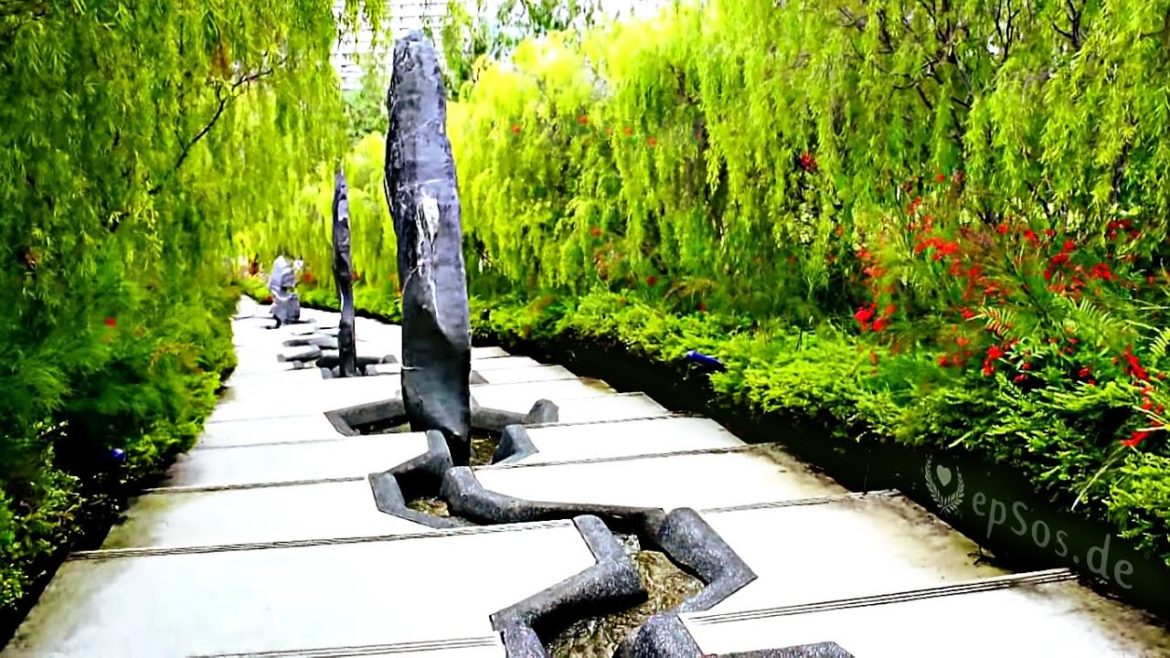Free video about Beautiful Chinese garden. This free video was created for you by http://epsos.de and can be used for free under the creative commons license with the attribution of epSos.de as the original author of this Beautiful Chinese garden video.
Thank you for supporting the creative commons movement !!
The art of gardening has, for Chinese, the same sacred regard that writing or poetry. The garden is at the same time, part of your home and playground, a “magical” place, a cosmos in miniature which seeks to recreate the image of an ideal nature. The garden is a constant compromise between the dimensions aesthetic and symbolic. Beautiful Chinese gardens respond, therefore, a series of codes which, if ignored, result in a partial interpretation of its meaning or what the artist wanted to express.
The history of gardening in China is more than a thousand years. The garden had, in principle, a mystical origin: Zhuangzi so asserted, attributing it to a speech by Confucius in the park mentioned Xiwei, legendary ruler above the Yellow Emperor. The traditional Beautiful Chinese garden symbolizes paradise in the world. According to ancient Chinese legend, this was paradise on the summit of a mountain that was in some distant islands that were in the midst of the sea. There the elixir of “eternal youth”, which allowed access was immortality. This legend explains the great importance of the mountain, the sea and the islands are in the symbolism of Beautiful Chinese gardens.
The art of Beautiful Chinese gardening took place in three different stages and was refined until the eighteenth century. Western settlers introduced, then the culture of Western gardens. The garden Yuanming Yuan, designed by missionaries French, is the most obvious example of this interference which put also an end to the traditional Chinese gardening. Despite the profusion of them in ancient times, very few traditional Chinese gardens currently exist. Most of them were victims of fires, accidental or provoked. Since the traditional Chinese buildings were built with wood, there remains no vestige even architectural. The influence of Beautiful Chinese gardening could exercise against the Japanese and Korean gardening was soon diluted to develop these, your own aesthetic.
A garden is an element with life. You must verify the same changes that verifies the nature in different seasons and the succession of bloom that accompanies it, as well as the play of light and shade provided by the solar cycle, and the diurnal and nocturnal variations. Through incessant and multiple transformations, the garden is acquiring a new dimension, in which, at every moment, enjoying an ephemeral and fleeting impressions vision of a universe in constant motion.
The garden has, in this way, two spaces, where it is, in this view, the necessary spatial continuity between interior and exterior space. The boundary between artifice and reality is very thin, as evidenced Gardens lama monasteries, who had been assigned the priests, or in rice fields where they worked as farmers.
A Beautiful Chinese garden had to be a reflection of nature and, as already mentioned, the general harmony was far more important than symmetry and order. The fundamental principle of feng shui: “less is better”, is evident in the gardens: quality prevails over quantity. The Beautiful Chinese garden is not, at all, the exponent of a botanical collection. Trees are planted asymmetrically because themselves constitute a structural element that allows you to create some interesting perspectives embossing, in turn, other garden elements (rocks, water, etc..).
Water and stone are elements of great symbolic value and, also, are the pillars of the aesthetics of Beautiful Chinese gardens. If careful consideration regarding the Chinese conception of the gardens is done, the roots of feng shui and its foundations evidence commonly exposed in large landscaped treaties.
Water is one of the essential elements. Favors by transmitting calm, meditative contemplation. The sound of running water, suitably located, reinforce this feeling. The pond, simple shapes, always trying to preserve the natural harmony, is at the center linking the different elements of the garden. Water also symbolizes latent strength, walking the byways of the land is capable of eroding the strongest rock.
Beautiful Chinese gardens have deep philosophical roots. Natural elements are chosen for their historical, literary or symbolic meaning. The landscape painters and garden art evolved in perfect harmony in China. A garden must reflect two vital aspects. The nature that is represented by trees, rocks and streams that run through the garden designer and representing creation, a creation that should approach the most harmonious way possible, to natural balance.
Thank you for supporting the creative commons movement !!

